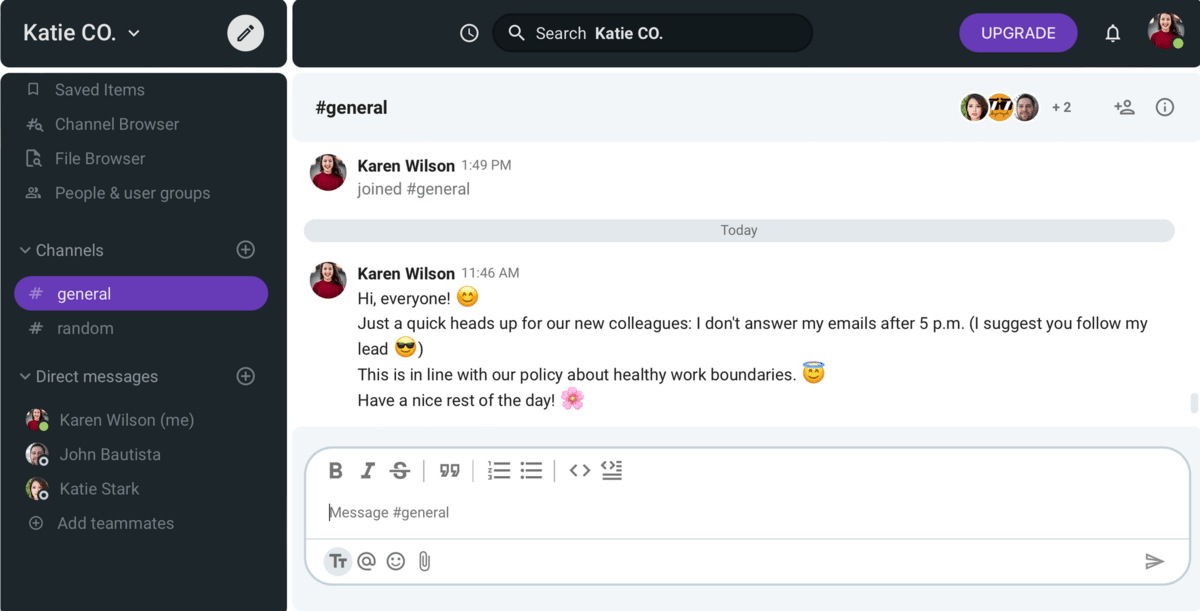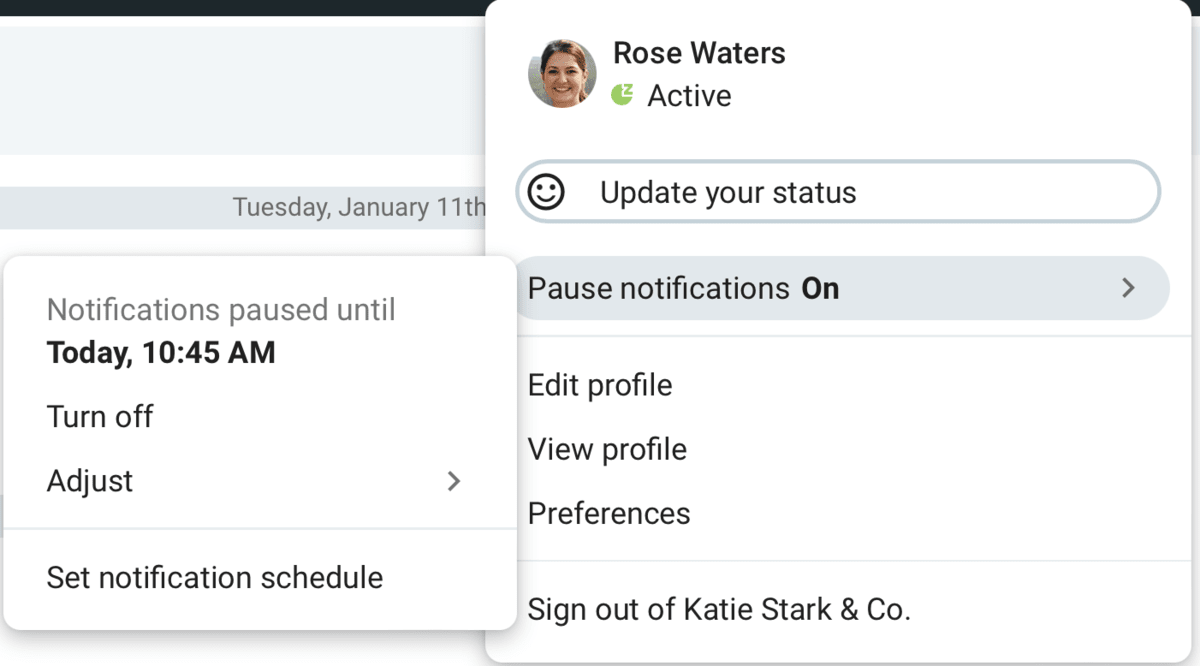You crafted a business email with a compelling subject line, an effective email opening, and a concise message.
Knowing that a strong email closing maintains an image of professionalism, you put an extra effort to sound professional at the end and include a call to action.
With confidence that all criteria for creating a professional email are met, you proofread the email and finally clicked send. But, despite all your efforts, you haven’t gotten any reply.
We’ve all been there, but you must be wondering what you should do better next time.
Even though you can’t control whether the recipient will respond, you can improve the chances by considering one of the most important factors ― email timing.
Whether you’re sending an email to your colleague or a newsletter to your leads, good timing is equally important as the email content itself!
In this article, you’ll find out:
- Why good timing is critical for email correspondence and email marketing,
- Factors to consider when choosing the right email timing, and
- The best time and days for sending emails according to studies.
So, let’s get started!

Table of Contents
Why does good email timing matter?
Despite the widespread assumption that email doesn’t require optimal timing such as instant messaging, the reality is that it’s critical for professional email correspondence and email marketing.
Even though email is not a real-time communication system such as a team communication app like Pumble, the time you send emails has a dramatic impact on whether they get opened or ignored.
Here’s why you should consider email timing when sending professional emails:
- Good email timing increases open and response rates.
- Good email timing conveys respect.
Reason #1: Good email timing increases open, response, and click-through rates
Although the recipient receives your email regardless of the time you send it, proper timing determines whether the email gets opened and read.
This especially applies to email marketing automation and cold email outreach, where open rates are generally lower compared to internal email communications.
Most importantly, good timing in email marketing is critical for increasing click-through rates ― the percentage of prospects who clicked on the link in your email.
So, why does timing determine whether the recipient will open and respond or click through an email?
People are overwhelmed by emails, so typically, they check emails in order from most recent to oldest. That’s why you should send an email when the recipient will most likely check the inbox ― to ensure they won’t skim over and miss your email.
Therefore, in addition to compelling email copy and straightforward subject line, email delivery time has a dramatic impact on whether the recipient will see and read the email or ignore it.
Reason #2: Good email timing conveys respect
Aside from a better chance of getting a response, proper timing is crucial for showing respect to the recipient.
Let’s say it’s Saturday and you suddenly remember that you forgot to send an email to your colleague. Instead of reaching out over the weekend, make sure to do so on Monday during business hours. This way, you show that you respect their free time and work-life boundaries.
After all, if you want others to treat you with respect, you must respect them as well.

💡 Pumble Pro Tip
Respectful communication is important for creating a positive work environment. To learn more about the benefits of respectful communication and how to achieve so in the workplace, make sure to read our blog post:
Factors to consider when choosing a time to send business emails
Whether you’re sending an internal email to your team member or an external email to a potential business partner you don’t know personally, following proper email etiquette rules is essential to convey a message clearly.
This way, you avoid miscommunication and improve your chances of getting a positive response to the email.
As one of the critical email etiquette rules when reaching out to your internal or external stakeholders, good email timing is a key step for improving professional communication.
With that in mind, you should consider the following factors when choosing the right time to reach out to your colleagues or a third party such as suppliers or business partners:
- Work hours, and
- Time zone.
So, let’s dig deeper into each of them.
Factor #1: Work hours
As we already mentioned, sending emails at the proper time is essential for respecting others’ work-life boundaries.
Therefore, make sure to respect others’ free time and be careful to send emails during the recipient’s work hours.
Although some people believe that sending emails outside business hours can’t hurt anyone, this practice may unintentionally put pressure on the recipient. This especially applies to communication with people outside of your company.
Unlike communication with external stakeholders, internal communication allows you to set clear email expectations among coworkers.
For example, as a team leader, you can clarify with your team members that you might send some important emails during non-business hours, but without expecting an immediate response.
However, according to the research about the impact of organizational expectations for email monitoring after-hours on employees, sending emails during non-work hours negatively affects employee well-being, causing work detachment and emotional exhaustion.
Thus, being able to unplug from work is critical for employee productivity and mental health.
Moreover, according to a Forbes article about the consequences of late-night emails, making clear communication guidelines is crucial to help your coworkers truly disconnect from work during vacation, weekends, and evenings.
So, if you’re a team leader, avoid email communication during non-work hours to improve your team’s:
- Work-life balance,
- Productivity, and
- Well-being.
Remember, companies that nurture a healthy work environment tend to clarify communication expectations, which help employees set clear boundaries between their work and private lives.
Factor #2: Time zone
With the growing popularity of remote work, it’s not uncommon for teams to work in multiple time zones.
Despite the communication challenges due to different time zones, being aware of your recipients’ time zones may increase the open and response rates of your emails.
To respect your colleagues’ or business partners’ work-life boundaries, you don’t have to hurt yours. Namely, in this case, the best practice is to send an email within hours of overlap.
Remember, the most important thing is to clarify how and when the team should communicate.

💡 Pumble Pro Tip
While external communication is still most adequately handled via email, using email as a remote communication tool is not always the best option.
With a team collaboration app, remote teams can stay connected and productive. Plus, they can customize notifications to set professional boundaries with their coworkers.
To learn more about the pros and cons of email communication for internal communication and remote teamwork, make sure to read our blog post:
Factors to consider when choosing a time to send marketing emails
Unlike email correspondence, email marketing typically implies reaching out to a group of people for promoting the business’ product or service.
Hence, when emailing hundreds or thousands of people, choosing the right email timing can be more challenging.
Before we dive into the results of studies about the best email marketing timing, let’s analyze the most important factors you should take into account when choosing email delivery times.
Factor #1: Your target audience
To determine the most appropriate time to send your marketing emails, an essential step is to know your target audience.
But, knowing that your emails are intended for hundreds or even thousands of people can be discouraging when trying to define your audience.
That’s why you need to identify your buyer persona ― a data-based representation of your ideal customer, which has multiple importance for relating to your prospects.
Most importantly, buyer persona empowers you with relevant information about your audience’s demographics and behaviors. With this data, you can elevate your marketing efforts in various ways such as:
- Personalizing offers,
- Optimizing customer experience,
- Personalizing email copies, and
- Optimizing email delivery time.
Furthermore, all these improvements lead to:
- Increased email click-through rates,
- Boosted audience engagement, and
- Increased return on investment.
That’s why it’s significant to find answers to:
- Demographic questions: How old are they? Where are they located?
- Questions about their behavioral patterns: What does their typical day look like? What time do they typically check their emails?
This way, you can better understand what time is perfect to send promotional emails to your prospects and improve the results of your email marketing.
Factor #2: Seasonal changes
Learning about your audience’s demographic traits and behavioral patterns is a great starting point, but it shouldn’t be set in stone.
Namely, human behavior changes with the seasons ― so, people tend to change their online behaviors over different seasons, including the frequency of checking their email inboxes.
Hence, when choosing the best time to send your marketing emails, you should take into account your leads’ behavior patterns typical for the current season.
For instance, although the weekends are not the best days for email marketing campaigns, this may not be the case during winter when people spend more time at home on their devices.
Factor #3: The product or service you offer
Your offer can also help you determine when to send out your marketing emails.
If you have a business-to-business audience, you should undoubtedly reach out to them during weekdays and business hours.
However, if you promote gaming products to a business-to-customer audience, weekends are most likely the best time to outreach.
Best and worst days to send a marketing email
According to the Entrepreneur article about the best days and time to send emails, the collective research says that the best days to send out marketing emails are:
- Tuesday,
- Wednesday, and
- Thursday.
When it comes to business-to-business email marketing, the most recent studies show that Thursday took first place. Tuesday is the second-best day, while Wednesday is ranked as the third-best day for sending emails.
We can note that email open and click-through rates in B2B marketing are the highest in midweek.
So, why are these metrics lower on Monday and Friday?
As stated in the Entrepreneur article about the most productive days of the week, Friday is the least productive day after the weekends ― so, it seems common sense that people don’t check their emails frequently on Fridays.
On the other hand, a StudyFinds survey suggests that Monday is the most productive day in the week ― on Mondays, people usually focus on tasks and projects.
Additionally, when people start their Monday morning by checking their email inbox, they often find a bunch of emails that piled up over the weekend ― so, there is more chance that they will miss yours.
Finally, Saturday and Sunday are the worst days to send B2B marketing emails.
However, when it comes to B2C marketing emails, weekends are not necessarily bad days for reaching out.
As we’ve mentioned, depending on your target audience, their behavioral patterns, and your industry, weekends might be a good time to reach out.
Best and worst times to send a marketing email
For most B2B and B2C email marketing campaigns, the collective research shows that the best time to send emails is between 9 a.m. and 12 p.m.
Ten a.m. took the first place as the best time to send out emails, while 9 a.m. is the second best time.
Generally, morning send times are the best performers.
On the other hand, the worst time for email marketing is between 7 p.m. and 2 a.m.
Generally speaking, the most appropriate time to send both marketing and business emails are morning hours, when people tend to check and open their emails.
But, instead of taking these results for granted, make sure to consider the most important factors that we’ve already discussed such as your target audience and your industry.
Make your communication immediate and more effective with Pumble
There’s neither an ideal day of the week nor a time of day to send business or marketing emails.
So, if you don’t want to spend your days thinking whether your email arrived at an ill-fortunate time, switch to a method of instantaneous communication — like Pumble, a team communication app.
With Pumble, you won’t have to ponder whether your coworkers will see your direct message on time because:
- Every person has a status indicator next to their name, so you’ll know whether the person you’re messaging is available for conversation or not,
- You can schedule messages to go out at any time, and
- You can use private and public channels to send messages to groups of people at the same time, to which they can quickly reply with a reaction or in a thread.
So, ditch those emails and switch to something more efficient. See how Pumble can change the way you communicate!





